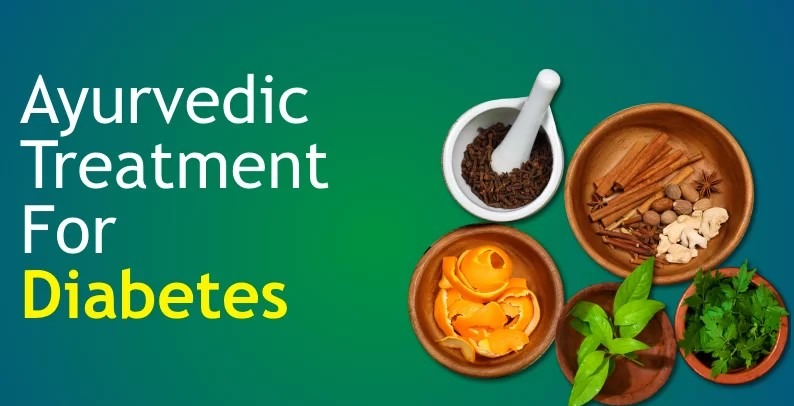Diabetes Treatment in ayurveda


Ayurveda approaches any illness or condition holistically; Diabetes is no exception. Diabetes is a chronic metabolic condition in which the body is unable to adequately utilize glucose, resulting in hyperglycemia (hyperglycemia) and sugar in the urine.
Diabetes According to Ayurveda
Diabetes is named “Madhumeha” / “prameha” in Ayurveda. Diabetes in Ayurveda is literally translated as “sweet urine” because “Madhu” means sweet and “Meha” means urine.
The name comes from the fact that diabetic urine tastes and smells like honey. Each individual is described by Ayurveda as a unique blend of Doshas. There are three Doshas: Vata, Pitta, and Kapha. The doshas Vata and Pitta are dry and airy, while Kapha is cold, heavy, and slimy.
The imbalance of each Dosha results in health issues that are linked to the imbalance. The Kapha Dosha imbalance is a cause of diabetes. Being a Kapha dominant person, however, does not automatically imply diabetes
If the Kapha dominance isn’t countered with a balanced lifestyle, it can lead to diabetes.
Role of Ayurveda in Diabetes Treatment
Ayurveda has a unique approach to diabetes (Madhumeha) treatment, which includes diet (Pathya), medicines and medications, exercise (Vyaayam), and panchakarma (bio-purification procedures). And it works if you stick to them without stopping.
Diabetes Treatment: Ayurveda vs. Modern Medicine
Diabetes mellitus is a metabolic condition. It can’t be treated solely by lowering blood sugar levels.
In contrast to modern medicine, Ayurveda approaches diabetes in a unique way. It literally revitalizes the body, not only to “control” sugar levels but also to prevent further complications.
Ayurvedic Diabetes Treatments
There are 20 types of diabetes (prameha) according to Ayurveda: 4 due to Vata, 6 due to Pitta, and 10 due to Kapha, respectively. However, diabetes (Prameha) is primarily Kapha doshaja. Ayurveda can help you with diabetes in four ways:
Ayurveda For Diabetes: Detoxification
Depending on the individual’s condition, diabetes may cause obesity or emaciation. Detoxification of the body may help people suffering from diabetes who are not overly weakened. Toxins can hinder digestion and can increase in the body to cause diabetes-induced imbalances. Some detox or herbal cures helping with toxin removal can be advantageous.
Ayurveda provides an extensive and costly detoxifying program called Panchakarma. An alternative is to find practitioners from Ayurveda who can deliver a personalized detox plan with herbal and other detoxification techniques at home.
Ayurveda For Diabetes: Diet
Ayurveda’s diabetic diet plan is a simplified diet to minimize sugar in the body in order to reduce blood glucose levels. The diet consists of barley, light and bitter vegetables, ghee, herb, and any other appropriate food based on the person’s constituent nature. Honey balances Kapha and can benefit some people.
A diagnosed diabetes person is better to ask with an ayurvedic doctor to ensure that they consume foods according to the type of diabetes and their composition, since 24 different diabetes causes are present.
It might not be your right course of action to eat a Kapha balance diet if you have a mainly vata constitution. Ayurveda adapts diet and herbal planes according to the constitution of each person and current imbalances, which makes them so powerful. This is one of the reasons.
Ayurvedic Foods to Avoid If You Have Diabetes:
These foods must be prevented if you are diabetic –
• Sugar • Sugarcane juice • Oil • Ghee • Jaggery • Cakes • Sour Beverages • Alcohol • Curd • Junk foods • Butter • Cold Drinks • Biscuits • Carbohydrate-dense foods • Root rhizome
Ayurveda For Diabetes: Herbal Remedies
Ayurveda specifies also the use of some herbs that may aid in diabetes treatment. Different scholars were drawn to herbal preparations for treatment of metabolic syndrome. Below are a few ayurvedic herbs used to alleviate symptoms of diabetes.
Turmeric: Turmeric powder is an anti-allergic, anti-cancer, anti-inflammatory, and one of the strongest natural anti-diabetic agents. It aids in the purification of the blood, acts as a channel opener, aids in the reduction of insulin resistance, and thus facilitates glucose entry into the cells. Turmeric is effective when combined with aloe vera.
Saptrangi: This is an excellent diabetes treatment. It is a tree whose bark is efficient at regulating blood sugar levels. It is widely studied in western herbal universities, but has been used in Ayurveda for centuries. The herb has been shown to have anti-diabetic effects.
Vizaysaar: This is a large tree whose bark contains significant anti-diabetic properties. Diabetes patients keep some water in the wooden glass overnight and drink it in the morning. When the water color does not change to brown, the glass is replaced after approximately one month. Diabetes support includes an extract of the miracle tree’s bark.
Bilva: This tree’s roots are covered in three leaves. Ayurveda regards any tree with a mixture of three leaves as divine and the abode of Lord Brahma, Vishnu, and Maheshwar. This tree’s fruit is beneficial for irritable bowel syndrome. Bilva leaves are excellent for diabetics. The leaves are dried, ground into a powder, and combined with other herbs to maximize effectiveness.
Gurmar: Gurmar translates as “The sugar destroyer” in Hindi. It is a twine that has been used in Ayurveda for centuries for its sugar-regulating properties. Recent research indicates that it comprises Gymnemic acid molecules, which are supposed to be responsible for its anti-diabetic properties. They form complexes with sugar molecules in the intestines, preventing them from entering the bloodstream. As a result, it is effective at regulating blood sugar levels.
Karela: This vegetable’s juice works wonders in reducing and managing complications of diabetes. For better performance, 30 ml of Karela juice first thing in the morning on an empty stomach is recommended. It works best when combined with Amla juice.
Tulsi: The people of India revere this plant for its extraordinary medicinal properties. Regular use of tulsi leaves successfully regulates blood sugar levels. Additionally, it is beneficial for a variety of cancers, respiratory and bacterial infections, sore throats, coughs, and colds.
Fenugreek: A spicy, pungent herb that aids in the reduction of excess kapha. Fenugreek is an outstanding herb for controlling blood sugar and cholesterol levels. Fenugreek seed powder is used to help control blood sugar levels.
Neem: In Ayurveda, neem has historically been used to purify the blood and boost the immune system. It aids in the maintenance of normal blood glucose levels.
Guggulu: Guggulu has been used in Ayurveda for centuries to gently detoxify the body and promote appropriate nutrients by enhancing the body’s metabolism and aiding in the elimination of waste products. Through its scraping behavior, it aids in the removal of excess sugar and fat from the body.
Amla: Amla is the richest source of vitamin C on the planet and is nature’s superantioxidant. Amla contains 30 times the amount of vitamin C found in an orange. It slows the aging process and thereby delays the onset of diabetes complications.
Ayurveda for Diabetes: Lifestyle Modifications
Diabetes has recently been characterized as a lifestyle condition rather than a disease associated with aging. As previously mentioned, diabetes is caused by an affluent lifestyle that includes a sedentary work schedule, inadequate physical activity, and an excessive intake of refined foods.The most successful ayurvedic treatment for diabetes is exercise and yoga.
Diabetes and Yoga:
Yoga aids in the management of diabetes. This is mostly because Yoga has a calming effect on the factors that contribute to diabetes. Stress and obesity are two major factors that contribute to the development of diabetes. Regular yoga practice combined with meditation alleviates tension and slows the body’s fat production. Pranayam, surya namaskar, balasana, vajrasana, sarvangasana, halasana, and dhanurasana are only a few beneficial postures.
Additional diabetes-control approaches
Avoid mid-day naps.
Consume less carbohydrates
Keep away from alcohol and tobacco
Incorporate a small amount of exercise into your everyday routine, just enough to get your heart pumping.
Avoid skipping blood tests.
Maintain daily health inspections
Avoid adding an excessive amount of oil to your food.
Bottom Line
Dietary preparation and lifestyle modifications are the go-to habits and methods for treating diabetes.
In today’s hectic lifestyle, it’s easy to fall into bad behaviors. The stressful routine can build up and lead to medical traumas such as hypertension, heart attacks, emotional binge eating (which leads to obesity), and high cholesterol. Both of these signs contribute to the development of diabetes; however, you can delay the disease’s early onset by taking control of your routine and making healthy lifestyle choices.
1. Consume a well-balanced foods that are low in sugars.
2. Increase your consumption of green leafy vegetables (along with some herbs such as turmeric, fenugreek, bitter gourd, and bael).
3. Never take a break from practicing Yoga.
Treatment For Diabetes At Ayurveda
he approach is to manage sugar in a holistic and healthy manner, which can be accomplished by Ayurvedic techniques and medications; of course, consult your doctor before taking any kind of drug, natural or otherwise.
Diabetes is a severe lifestyle disorder, if left untreated, can result in organ failure. Diabetes can be managed with the use of therapies, yoga, and a special diet. Herbal treatments have been shown to be efficient at regulating blood sugar levels and protecting the body.
Additionally, our doctors offer customized advice in lifestyle modification, which is critical for mitigating the effects of this metabolic disorder.

